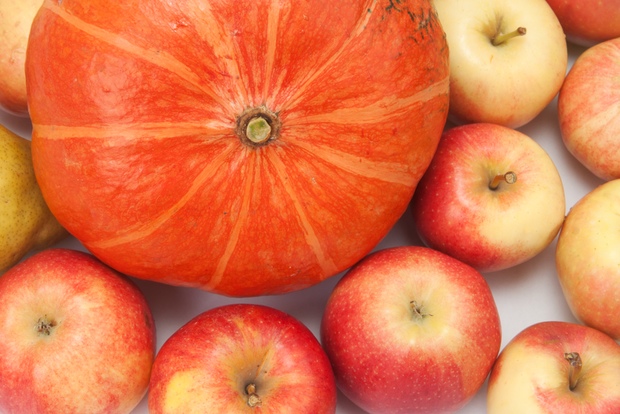Autumn is just around the corner, and we’re already loving the cooler weather. But there are a few things we will miss: summer produce, like a ripe avocado and juicy berries. Luckily, fall has its own bounty, with crisp apples and colorful squash. Local nutrition experts gave us the lowdown on what fall fruits and vegetables to stock up on this season and their favorite ways to eat them.
Artichokes
This early fall vegetable is packed with heart-protective nutrients and cancer-fighting antioxidants, including anthocyanins, cynarin, and silymarin. In fact, the USDA ranked it seventh in its listing of produce with the highest antioxidant levels. Says GW Medical Faculty associate senior nutritionist and registered dietitian Claire Lebrun, “Artichokes are great for weight loss, as they take time to eat and pack ten grams of fiber each.”
How to eat: Try them steamed with garlic, lemon, and olive oil. Or, try them pureed into a nutritious dip with spinach, parmesan, garlic and Greek yogurt.
Parsnips
A favorite of registered dietitian Rebecca Scritchfield, parsnips have more vitamins and minerals than carrots, a relative. Scritchfield, who specializes in sports nutrition and weight management, says parsnips are great for runners and endurance athletes, thanks to their nutrient profile: 50 calories and 300 milligrams of potassium in just half a cup.
How to eat: Try roasting them or cooking them in a zesty vegetable chili.
Brussels Sprouts
Sure, they’re not always popular with kids, but “Brussels sprouts provide a boatload of nutrients and are especially high in vitamins K and C,” explains dietitian Rima Kleiner.
How to eat: She recommends sautéing them with a little olive oil, sage, cinnamon, and chopped walnuts. Or serve them on salads, with scrambled eggs, or alongside oven-baked fish and chips.
Butternut Squash
“The taste just makes me think of autumn,” says Cheryl Harris of Harris Whole Health. It’s a great source of vitamin A, C, fiber, potassium, and magnesium and can decrease your chances of catching a cold or flu.
How to eat: It goes well with seasonal spices such as cinnamon, cloves, and nutmeg. Also try it roasted, tossed into a stew, lasagna, bread, or butternut pie.
Honeycrisp Apple
This is a top vote for almost all of the nutrition experts. Says Danielle Omar, “Crispy and sweet with a hint of tart, it’s nature’s perfect afternoon pick-me-up!”
How to eat: For some extra spice, sprinkle on some cinnamon and bake for a healthy dessert, says Elana Natker.
Acorn Squash
“It’s so naturally sweet!” says Robyn Webb of her favorite fall vegetable. It’s extremely low in saturated fat and high in fiber, vitamins A and B6, folate, and magnesium, making it great for weight loss.
How to eat: Webb loves it roasted in chunks lightly coated in honey and walnut oil.
Pumpkin
Pumpkin’s reputation has increased by leaps and bounds over the years, thanks to its tasty take on a latte. Stephanie Mull says its slightly sweet flavor makes it versatile, which is why it works as an addition to so many recipes. So whether you bake it in muffins, bread, pie, or pancakes, you’ll be adding vitamins A and C, fiber, magnesium, and zinc to your diet.
How to eat: Another good tip from Kait Fortunato: Add a can of pumpkin to a chili or soup to “give it a thick, hearty flavor without adding creams and other high-calorie sauces.”
Mushrooms
These little guys are available year round, but their peak season is fall and winter. They’re packed with nutrition, including B vitamins, the essential mineral selenium, and antioxidants.
How to eat: Try white button or portobello mushrooms, says Joy Dubost.
Endive
Endive don’t just make a pretty appetizer; they’re also rich in folate, which is highly recommended for pregnant women.
How to eat: Try Shelley Alspaugh’s endive salad, which includes chopped endive, blue cheese, pecans, olive oil, vinegar, and another favorite fall fruit of hers, pears.



















